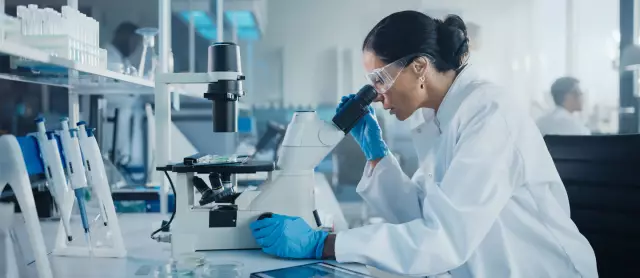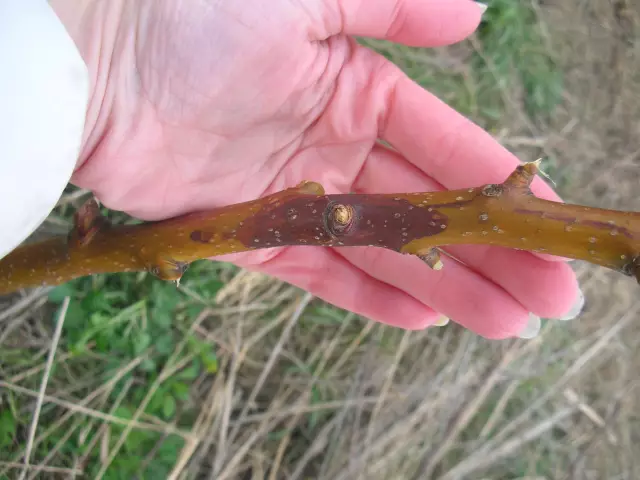- Author Curtis Blomfield [email protected].
- Public 2023-12-16 20:44.
- Last modified 2025-01-23 17:01.
Most of the living matter of the Earth is represented by microbes. At the moment this fact is established accurately. A person cannot be completely isolated from them, and they got the opportunity to live in it or on it without causing harm.
About germs

On the surface of the human body, on the inner shells of its hollow organs, a whole crowd of microorganisms of various stripes and types is placed. Among them, one can single out optional (they may or may not be present) and obligate (every person must have them). What is opportunistic microflora?
The process of evolution has affected the relationship of the body with the microbes in it and has led to a dynamic balance controlled by the human immune system and some competition between different types of microbes, which is considered the norm.
However, this community of microbes also contains those that can cause some kind of disease under conditions often beyond their control. This is the conditionally pathogenic microflora. These microorganisms are quite a large number, for example, tothese include some types of Clostridium, Staphylococcus, and Escherichia.
A person and the bacteria living in his body have a rather diverse relationship. Most of the microbiocenosis (microflora) is represented by microorganisms coexisting with humans in symbiosis. In other words, it can be said that the relationship with him benefits them (UV protection, nutrients, constant humidity and temperature, etc.). At the same time, bacteria also benefit the host organism in the form of competition with pathogenic microorganisms and their survival from the territory of their existence, in the form of protein breakdown and vitamin synthesis. At the same time as useful bacteria in humans, there are cohabitants that do not cause much harm in small quantities, but become pathogenic under certain circumstances. These are opportunistic pathogens.
Definition
Conditionally pathogenic microorganisms are called microorganisms, which are a large group of fungi, bacteria, protozoa and viruses that live in symbiosis with humans, but under certain conditions cause various pathological processes. The list of the most common and well-known includes representatives of the genera: aspergillus, proteus, candida, enterobacter, pseudomonas, streptococcus, escherichia and many others.
What else is interesting about opportunistic microflora?

Scientists cannot define a clear boundary between opportunistic, pathogenic and non-pathogenic microbes, since their pathogenicityin most cases determines the state of the body. Thus, we can say that the microflora, which was revealed during the study in an absolutely he althy person, can cause a disease in another, followed by a fatal outcome.
The manifestation of pathogenic properties in opportunistic microorganisms can only be during a sharp decrease in the body's resistance. A he althy person constantly has these microorganisms in the gastrointestinal tract, on the skin and mucous membranes, but they do not cause the development of pathological changes and inflammatory reactions in him.
Opportunistic pathogenic microflora for the time being is not dangerous to humans. But there are nuances.
Therefore, opportunistic microbes are called opportunists, because they take every opportunity to multiply intensively.
When should I be afraid of such an infection?
About the occurrence of problems, however, we can talk about the case when, for some reason, immunity is greatly reduced, and this was discovered during the examination. Conditionally pathogenic microflora is then really dangerous to he alth.

This is possible in some situations: with a severe respiratory viral infection, acquired or congenital immunodeficiency (including HIV infection), with diseases that reduce immunity (diseases of the cardiovascular system and blood, diabetes mellitus, malignant tumors and others), taking drugs that suppress the immune system (chemotherapy forcancer, corticosteroids, cytostatics, and others), with hypothermia, severe stress, extreme physical exertion or other extreme environmental influences, during breastfeeding or pregnancy. Each of these factors, individually and in the aggregate of several of them, is especially capable of causing opportunistic bacteria to cause the development of a rather serious infection and become a threat to human he alth. When is culture required?
Staphylococcus aureus
In doctoral practice, the following situations often occur: when a positive test for Staphylococcus aureus is obtained from a swab from the nose, throat, breast milk or skin surface, an absolutely he althy person may get too excited and require a specialist to conduct therapy, including antibiotics. Such concerns can be easily explained, but they are often unfounded, since almost half of the people around the world have Staphylococcus aureus and do not even suspect it. This microorganism is an inhabitant of the mucous membrane of the upper respiratory tract and skin. This is typical for such a category as opportunistic pathogens.

He is also the owner of a phenomenal resistance to various environmental factors: exposure to many antibiotics, treatment with antiseptics, cooling and boiling. This reason affects the fact that it is almost impossible to get rid of it. All household appliances, surfaces in the house, toys and furnitureseeded by them. And only the ability of skin immunity to weaken the activity of this microorganism saves most people from death due to infectious complications. Otherwise, the growth of opportunistic microflora, and in particular staphylococcus, would not be stopped.
It can be concluded that the only factor that Staphylococcus aureus cannot cope with is human immunity. Falling into the category of increased risk occurs when the protection of a person is weakened. In this case, it can cause serious diseases, such as pneumonia, meningitis, as well as infectious lesions of soft tissues and skin (phlegmon, abscess, panaritium, and others), cystitis, pyelonephritis, and others. The only possible treatment for staphylococcus is the use of antibiotics, to which this microorganism is sensitive. What is the opportunistic intestinal microflora?

E. coli
E. coli is considered a natural inhabitant of the lower digestive tract in every person. Without it, the intestines would not be able to fully function, since it is very important for the digestion process. Among other things, this microorganism contributes to the production of vitamin K, which is involved in the process of blood clotting, and prevents the development of pathogenic strains of intestinal bacteria that cause very serious diseases.
E. coli is not able to exist for a long time outside the host's body, since it is the most comfortable conditions for iton the surface of the intestinal mucosa. But this very useful and harmless bacterium can also be a real threat when it enters the abdominal cavity or the lumen of other organs. This becomes possible when the intestinal flora enters the urinary tract, vagina, or with peritonitis (the appearance of a hole that serves as an outlet for the contents of the intestine). This mechanism leads to the occurrence of prostatitis, vulvovaginitis, cystitis, urethritis and other diseases. Need regular seeding for microflora.
Greening streptococcus

Greening streptococcus is also an opportunistic bacteria, as it is found in most people. Its favorite localization is the oral cavity, or rather the mucous membrane that covers the gums, and tooth enamel. Including this microbe is found in smears from the nose and throat. The peculiarities of the green streptococcus include the fact that in saliva with an increased glucose content it is able to destroy tooth enamel, causing pulpitis or caries. A smear for opportunistic microflora is carried out by a doctor.
Prevention
It can be said that moderate consumption of sweets and simple oral hygiene after eating are the best prevention of these diseases. In addition, sometimes green streptococcus causes the manifestation of other ailments: tonsillitis, sinusitis, pharyngitis. The most serious diseases that can cause green streptococcus are meningitis, pneumonia, endocarditis and pyelonephritis. However, theydevelop only in a very small category of people who can be classified as high-risk.

And if bakposev is normal, and opportunistic microflora is not detected? This situation happens quite often. This means a variant of the norm.
Treatment
The only correct method of treating E. coli, viridans streptococcus and staphylococcus aureus is the use of antibiotics. But it must be accompanied by certain indications, which does not include being a carrier if it is asymptomatic.






